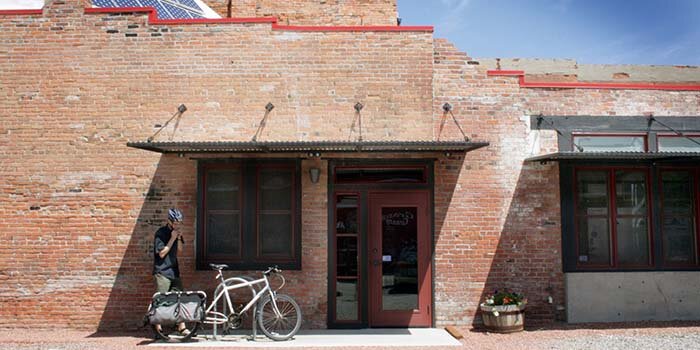On Green Architecture and Good Bike Rack Design
by Ed Gulick
September 17, 2015
What is a biking post doing on an architecture firm’s blog? We’re glad you asked! As a firm that is deeply committed to sustainable architecture, we have always been interested in promoting and using a variety of strategies to reduce carbon emissions and air pollution from burning fossil fuels.
We all are at least vaguely aware that there are environmental and health benefits for biking rather than driving to our destinations. But let’s put the energy use in perspective. According to our friends Alex Wilson and Tristan Roberts of BuildingGreen:
“The energy content of the gasoline used by the typical office commuter each year is comparable to the energy used by his or her share of the building where he or she works. Buildings have to be pretty close to net-zero energy before they’d save more energy through the building than by getting employees to bike instead of drive.”
Fortunately, we can pursue both biking and net-zero buildings. But there’s a lot of poorly designed infrastructure and uninformed public perceptions that are in the way of more people enjoying the health, environmental, and experiential (biking is fun!) benefits of riding.
For instance, many businesses do not provide any bike racks for their bicycling patrons, and the well-intentioned that do are often providing poorly-designed bike racks that are functionally useless: they could accommodate a fleet of microscopic bikes on the comb-style racks, but unfortunately, no one seems to be riding microscopic bikes.
So where does an architecture firm start to create a better bicycling environment?
1. Design our buildings to have excellent amenities for bicyclists. This includes showers for bicycle commuters and covered bike racks for long and short term parking. The City of Billings has some very helpful guidelines on selecting the right type and locating them in the right place: Billings bike guidelines.
2. Advocate for bicycle parking in the Billings zoning ordinances. The aforementioned guidelines should be incorporated into our minimum expectation for buildings in Billings, and there should be a commensurate reduction in the amount of required automobile parking.
3. Advocate for downtown Billings bikeways. Motorists and bicyclists alike need proper markings and signage so that everyone knows that people riding bikes belong downtown and have a safe place to ride. Downtown is everyone’s neighborhood, with the greatest concentration of workplaces, essential services, entertainment, and shopping opportunities. Everyone should be able to access them by bicycle without fearing for their safety.
4. Be a model bicycle-friendly business. We have some good amenities and policies to encourage and support our employees who bike to work, but we’ve recently identified some areas for improvement.
Stay tuned as we update you on our triumphs and travails with these efforts!

